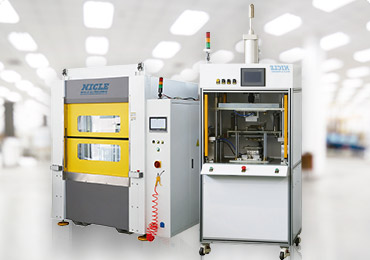In the fast-evolving sectors of new energy vehicles, high-voltage charging stations, and high-performance batteries, ultrasonic plastic welding technology is quietly revolutionizing manufacturing processes. With its unique advantages, this technology is transitioning from a niche solution to an industry essential. Recent industry conferences have highlighted a growing trend: more ultrasonic plastic welding machine companies are sharing their innovations, and traditional wire harness manufacturers are increasingly adopting ultrasonic welding equipment.

The Cutting Edge: Three Breakthroughs Transforming Ultrasonic Welding
Breakthrough 1: High-Performance Welding Heads for Enhanced Stability
Traditional welding heads often suffer from amplitude drift and reduced yield after prolonged high-frequency use. However, advanced material reinforcement techniques have led to the development of high-performance welding heads. These new heads boast significantly longer lifespans and minimal amplitude fluctuations, ensuring consistent performance. For instance, a leading automotive manufacturer has reported improved welding yields and fewer quality claims in high-voltage wire harness production, setting a new industry benchmark.
Breakthrough 2: Multi-Material Welding Breaks Traditional Barriers
Welding dissimilar metals has long been a challenge. Ultrasonic welding, with its high-frequency modulation and dynamic pressure control, now enables efficient welding of materials like copper and aluminum. This innovation has dramatically improved interface shear strength and expanded applications to ultra-thin materials, supporting advancements in battery energy density and wire harness lightweighting. Additionally, hybrid processes like adhesive-assisted welding are further boosting production efficiency.
Breakthrough 3: AI-Driven Welding Processes
The rise of smart manufacturing has unlocked new potential for ultrasonic welding. By leveraging neural network algorithms, welding equipment can now monitor vibration, pressure, and temperature in real time, ensuring precise control. AI adapts to material variations and automatically adjusts for contaminants like oxidation or oil, maintaining consistent weld quality. This intelligent approach is transforming traditional manufacturing workflows.
Real-World Applications: Innovations Across Three Key Sectors
Application 1: Revolutionizing Wire Harness Manufacturing
Traditional wire harness production is often costly and complex. Ultrasonic welding simplifies the process by eliminating components like copper terminals and plastic housings, significantly reducing costs. For example, a prominent battery manufacturer achieved substantial cost savings and optimized welding space in their sampling harnesses using this technology.
Application 2: Power Battery Welding Efficiency
While laser welding has been the go-to for power batteries, its heat-affected zones limit battery lifespan. Ultrasonic welding, with its low-temperature, high-efficiency process, addresses this issue. Optimized welding techniques have enhanced the tensile strength and cycle life of battery lugs, ensuring greater safety and reliability.
Application 3: Enhancing Charging Pile Reliability
As supercharging technology advances, liquid-cooled wire harnesses in charging piles face higher demands. Ultrasonic welding's integrated process creates seamless copper tube-to-wire connections, improving airtightness and durability under extreme conditions. Automated welding systems also support rapid, high-volume production.
The Road Ahead: Key Trends Shaping 2025 and Beyond
Trend 1: Nanoscale Precision Welding
Advancements in ultrasonic welding are pushing precision to the nanoscale. This breakthrough will enable new solutions for electronic component and power module packaging, driving the industry toward higher performance standards.
Trend 2: Intelligent Production Lines as the New Norm
Future welding production lines will be smarter and more efficient. Digital twin technology and self-learning algorithms will allow real-time monitoring and predictive adjustments, optimizing productivity and reducing spare parts inventory. These innovations promise significant economic benefits for manufacturers.
Trend 3: Green Manufacturing for a Sustainable Future
As global environmental awareness grows, green manufacturing is becoming a priority. Ultrasonic welding, with its additive-free, pollution-free process, is poised to become the preferred choice for sustainable manufacturing, aligning with industry-wide efforts toward eco-friendly practices.
Conclusion: A New Era for Automotive Manufacturing
The rapid growth of new energy vehicles and autonomous driving technologies is driving the widespread adoption of ultrasonic welding, from high-end manufacturing to broader industry applications. Modular designs are lowering technical barriers, making this technology accessible to small and medium-sized enterprises. Cross-industry collaboration and evolving standards will further accelerate innovation, ensuring the industry's healthy development.
As core technologies like process parameter libraries, failure models, and adaptive algorithms reach maturity, ultrasonic welding will play a pivotal role in reshaping the automotive manufacturing landscape. This technology is not just a tool—it's a catalyst for progress, injecting new vitality into the industry's future.





